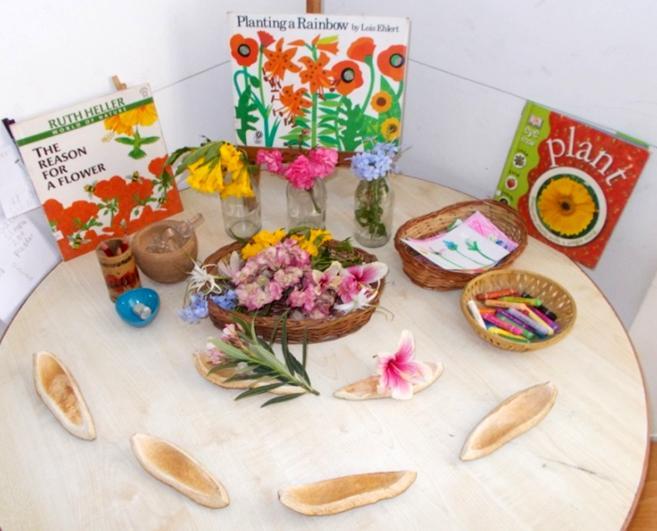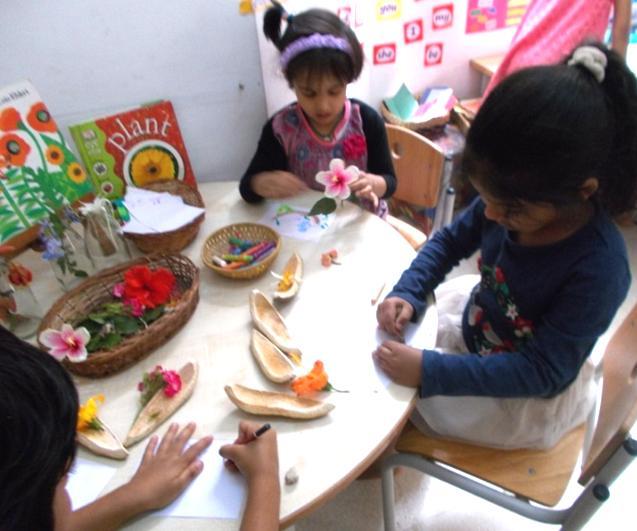Our Natural World
Context: During outdoor playtime, our children began to explore the garden, inspecting and collecting leaves and flowers. When they were outdoors, it was a common occurrence for tamarind pods to fall all around them from the tree under which they were playing. They began to collect these pods as well. We observed this building fascination with the natural world among our children and asked ourselves – “What could we do inside our classroom to support our children’s growing interest in plants?”

Weset up an exploration table with avariety of seeds, a few magnifying glasses, andsome resources for children to record their discoveries and wonderings. What unfolded was several days of fascinated exploration and rich conversations – children made personal connections, asked questions, createdtheories, and expressedtheirobservations using descriptive language.
Some seeds are big and some are small. Seeds are found inside the fruit. Birds take seeds and put them somewhere and then people take them and grow them.


I have orange seeds at home. I will bring it to school. We get pumpkin seeds from farmers and farmers get it from flowers. One uncle comes and gives flower and seeds to my mom.
Mustard is very tiny, we can’t even see it. But we can see it with a magnifying glass. Why is the light coming through the magnifying glass? I think the tubelight light is falling on the glass and that’s why we see this light.

My mom eats pumpkin seeds. Papaya seeds are very squishy!


Helping each other read



Making connections
See, these are the seeds of a strawberry!

Independently recording my observations






